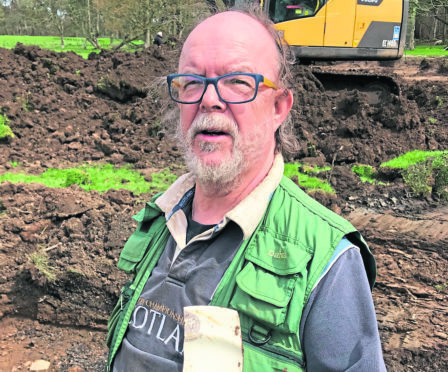A leading archaeologist is attempting to uncover the largely untold but rich military history of a north-east estate.
The remains of concrete bases for around 20 buildings have been found on the Bruckley Estate near Maud.
A team has also discovered discarded of ordnance, batteries, glassware and a other items, including a white dinner plate with a Navy, Army and Air Force Institutes (NAFFI) logo.
The site is known to have been used as a base for displaced Polish soldiers and as a prisoner of war camp during World War II.
But Alison Cameron, who operates her own archaeological firm, has appealed for locals to come forward and help her find out more.
She said: “I recently uncovered concrete hut bases from a camp in the grounds of Brucklay Castle as well as ordnance, wiring, glass and pottery.
“There has been little written about the camp which was built in the early 1940s and used until after the war and I wonder if anyone might remember it.”
The dig was undertaken as a condition of a planning application for a new house on the estate.
A report into the archaeological survey details what is known about the estate’s links with the armed forces.
In it, the archaeology team notes: “Andrew Dingwall-Fordyce, the former owner of the Brucklay estate, still holds part of the estate and deeds but there are no plans of the camp.
“He has almost no documented evidence of the camp but the Ministry of Defence requisitioned the castle and two fields beside it in 1941 and in was decommissioned in 1947.
“The army and officers lived in the castle and the soldiers in the grounds.
“The prisoners of war were by and large German and the soldiers were Polish. The army treated the castle badly and when they left it was, to all intents and purposes, uninhabitable.
“The highlight for the camp seems to have been in 1942 when the Duchess of Gloucester came by train to Maud and inspected the guard.”
Until about 20 years ago, it’s noted that German families were regular visitors to the estate and camp.
The former POWs are said to have enjoyed their time at Maud and subsequently brought the family back to see where they spent the war.
Anyone with information on the site’s military past can contact Alison Cameron at cameronarch@btinternet.com
